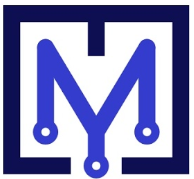Anonymous Office Occupancy Data: Privacy-Friendly Office Analytics


Data Without Spying: How Anonymous Occupancy Data Protects Privacy in Workplace Analytics
In today’s hybrid workplace, data drives better decisions. Companies rely on office sensors to learn which Desks and rooms are used most, when foot traffic peaks, and how workspaces actually function. This visibility supports everything from real estate planning to renovation decisions and lease renewal.
But one question often surfaces: Does this mean I’m being tracked?
The answer — with the right system — is no.
What Is Anonymous Office Occupancy Data?
Anonymous occupancy data provides valuable information about workspace utilization without ever identifying individuals. For example:
- The meeting room sensors report “3 people in Meeting Room B” — without knowing who they are.
- Data is aggregated: “This zone was occupied at 50% of its capacity during working hours.”
- Desk #xyz was occupied Monday from 9:30 to 11:45
This is fundamentally different from camera-based tracking. MySeat’s office occupancy sensors are privacy-first by design. They detect space usage, not people, with no video, no facial recognition, no personally identifiable information (PII) and no personal devices.
How MySeat Collects Anonymous Data
Our patented accelerometer-based sensors detect subtle micromovements when someone interacts with a surface (e.g., sitting at a desk, using a meeting room or a phone booth). Here’s how it works:
- Precision accelerometers measure vibrations 150 times per second.
- The system distinguishes human presence from inanimate objects.
- Occupancy changes are detected within 4 to 10 seconds at 99.8% accuracy.
Because our sensors don’t emit infrared or radar, and don’t require line of sight, they are energy efficient, discreet, secure and private.
At MySeat, all data is processed locally by the sensor before being encrypted and transmitted. Even if intercepted, the data is anonymous and non-sensitive.
We also align with GDPR and PIPEDA standards. Anonymous data (by design) is not considered personal data under privacy laws — but we still apply the highest standards of security and transparency.
The Benefits of Anonymous Workplace Data
Anonymous office occupancy analytics offers the best of both worlds: actionable insight without surveillance.
1. Workplace Optimization
Understand how your office is used:
- Track real desk usage versus bookings
- Identify low-occupancy floors for consolidation
- Compare meeting room availability to bookings to reduce ghost reservations
You’ll make smarter real estate decisions, improve space planning, and reduce overhead without collecting personal data.
2. Employee Trust and Comfort
People are more likely to support technology that respects their privacy. By keeping the focus on spaces and trends, not names or behaviors, anonymous data:
- Maintains a healthy workplace culture
- Avoids a chilling effect on behavior
- Encourages openness to space improvements
3. Easier Compliance
Anonymous data typically falls outside the scope of GDPR and similar laws. This means:
- Fewer legal hurdles or consent requirements
- Stronger alignment with employee councils or unions
- Faster stakeholder buy-in across departments
Let’s compare two common scenarios.
Hybrid Work Planning
You want to understand which days are busiest. With anonymous office sensors, you get a full picture without logging names or entry times. A badge system, by contrast, would collect identifiable data that must be protected and audited.
Desk Booking vs. Usage
Imagine 6 desks are booked but only 4 are used. Anonymous sensors show the gap, allowing you to adjust ratios based on factual desk utilization. You never need to know who booked or no-showed. That’s the power of data without surveillance.
Addressing Employee Concerns
Even with privacy-first tech, communication is key.
Be Transparent
Inform your teams in advance. A sample message might read:
“Next month we’re introducing desk occupancy sensors to better understand space usage. These are not cameras and do not record any personal data. They’ll help us improve the workplace experience while fully respecting your privacy.”
Explain It Simply
Use plain language like:
“These desk sensors measure interactions with the furniture. They tell us how many people are in a space, but never who.”
Share Results
Build trust by showing how the data is used:
- Share real time occupancy map
- Share workplace improvements plans with the different stake holders
- Act to improve the space by turning space in excess into something useful and enjoyable by employees
This shows the system is working for employees, not against them.
Office Occupancy Analytics Data Security and Responsible Use
If you are using other anonymized data (badge, Booking App) make sure it is being handled securely.
Encrypt and Protect
MySeat sensors encrypt data at rest and in transit. Only authorized users can access dashboards or make changes. We use secure cloud infrastructure and enforce role-based permissions.
Anonymity by Design
Avoid systems that capture identifiable data and “strip it out later.” Privacy should be built into the hardware and process from the start.
Never mix data sources (like badge logs and sensor feeds) in a way that could re-identify individuals. If in doubt, consult your legal or data officer before implementation.
Be Very Cautious With Cameras
Some systems claim to use blurred or anonymized video. Even if faces aren’t stored, video data can often be retrieved or repurposed later. We recommend hardware that cannot collect visuals at all, such as MySeat accelerometer-based office occupancy sensors.
Privacy-First Analytics in Action
At MySeat, we use our own technology to fine-tune our office layout. For example, anonymous data once revealed a rarely used corner. A quick investigation showed poor lighting and a cold draft. We adjusted both and usage jumped. No tracking was needed. Just presence counts told the story.
Our clients use live occupancy dashboards powered by anonymous data to support return-to-office confidence. Floors displayed a “busyness” score, helping staff choose where to work and avoid crowded areas. It fostered safety and transparency, without any privacy trade-off.
Conclusion: Data-Driven, Not Data-Intrusive
With the right tools and communication, office utilization data and analytics will improve performance, comfort, and efficiency, all while protecting employee privacy.
Anonymous office occupancy and utilization data is the gold standard. It tells you:
- How many people use your space
- When and where usage peaks
- Whether your workplace planning and layout match real behavior
It never tells you who those people are. That’s the point.
At MySeat, we believe privacy and performance go hand in hand. Our systems are built to show how your workplace functions, not who’s sitting where. This encourages adoption, trust, and long-term success.
Explore our privacy-first approach on the MySeat Technology page, or download our selected guide to GDPR- and PIPEDA-compliant. The future of office strategy is data-driven, respectful, and employee-friendly.
